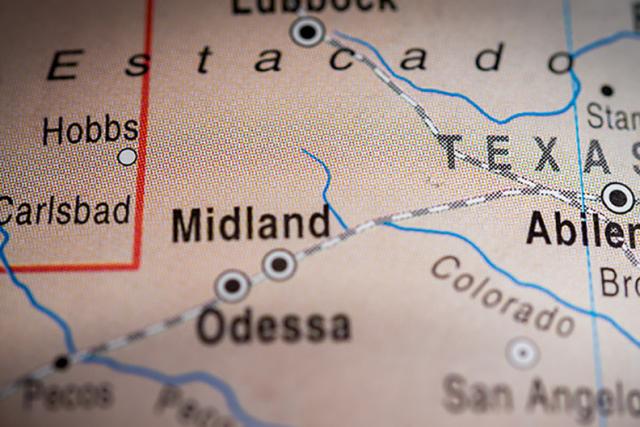
The oil and gas industry’s rapid Permian Basin expansion could push the power transmission and distribution capacity of the region’s electric system to its limits by 2020, a new GPA Midstream Association technical committee report cautions.
To forestall potential power service limitations or reliability problems, midstream operators and upstream producers should contact their respective transmission and distribution service providers (TDSP) to discuss projections for future power needs over the next five or more years, James Meier, vice president of Permian gas and power infrastructure for Pioneer Natural Resources Co. (NYSE: PXD) and vice-chairman of GPA’s technical committee, said.
A critical meeting to consider future West Texas power needs has been set for May 17, he noted.
“There’s a criticality to the timeline,” Meier emphasized in a Midstream Business interview. “We know the existing electric system will not be sufficient without significant future upgrades and, if not addressed, will have a significant impact on the future growth and development of the industry.”
Meier added that even with the collapse in commodity prices, the Permian Basin remains economic in many areas for producers to continue drilling and, along with midstream operators, use an ever increasing amount of electricity.
He said the current cycle time to approve, build and construct new power transmission projects is three to five years. However, if the TDSP don’t have a clear understanding of the future electrical load and its location, planned improvements could be undersized or constructed later than actually needed.
Under Texas law, the Electric Reliability Council of Texas Inc. (ERCOT) is the independent system operator that manages the electrical grid for most of the state, including most of the Permian region, and has a central planning role for transmission upgrades and additions.
Meier reviewed the power issue for GPA’s board of directors, which met last week at the conclusion of the organization’s 95th annual convention in New Orleans.
ERCOT hired a consulting group, Energy Ventures Analysis (EVA), based in Arlington, Va., in the summer of 2015 to assist in a West Texas electrical load study to gather data for ERCOT’s Regional Planning Group. Data from the study would be used to identify and potentially justify new transmission projects, starting this year.
However, “response to this survey has been sparse and represents less than one-third of the load in West Texas,” Meier told GPA’s board. Producers and midstream companies in certain cases already have been required to set up temporary power generation or establish lines of credit to get power connected quickly for new company projects. Both requirements increase project costs significantly, he noted.
ERCOT and its consultant modified the effort to focus on improving the load identification and communication process so that oil and gas operators and TDSPs would have improved understanding about the amount of load to be added, its timing and its location. That way, the TDSPs could identify transmission needs and develop projects in a timely manner to resolve those needs.
An ERCOT presentation prepared last year noted a 40% increase in power demand since 2010 in the organization’s Far West zone. The presentation said the bulk of the increase was attributable to “rapid growth of oil and gas exploration and production,” and “higher power needs for horizontal drilling.” The presentation noted regional utilities spent $299 million in 2014 to expand existing power infrastructure. It projected another $950 million in capital will need to be spent by 2020 to meet already identified demand growth.
An increasing number of midstream companies have opted for electrical service from local utilities rather than using fuel gas or plant-produced power to meet increasingly stringent air emissions standards, according to the GPA Midstream committee report.
“The biggest challenge to TDSPs are the large, single-point loads [i.e. processing plants, large compressor stations, pipeline pumping stations] in terms of servicing these large loads in a timely manner and identifying the location of the loads accurately to avoid stranded assets and/or increased costs to rate payers,” the report added.
“Unlike oil, product and gas pipelines, paid electric rates do not provide reserved capacity on wires. Generally, reserved capacity on regulated wires does not exist,” the committee’s report said. “This shared dynamic drives a basin-wide shared responsibility to assist transmission providers and regulators to understand and plan for load growth.
“While TDSPs have an obligation to serve, Permian Basin energy producers have a duty to assist TDSPs in assembling legally-mandated, routine plans to adequately invest in transmission infrastructure to deliver needed service. Failure in rendering this assistance will increase the probability that adequate infrastructure to support Permian Basin growth will be unavailable,” it added.
“All producers, midstream companies [including pipelines] and other industrial customers in the Permian Basin need to provide a 5-year electrical load forecast to their individual TDSPs,” the committee reported.
These 5-year forecasts are non-bidding estimates that TDSPs use when they develop their own internal planning processes which are used in ERCOT-developed transmission planning models. From year to year, those forecasts could change in response to changes in oil prices, firms’ drilling plans, or other factors.
The committee report noted ERCOT has a Regional Planning Group meeting set for May 17 at which EVA will present its findings and recommendations. EVA’s final report will be published by the end of June.
Energy firms should make it a priority to discuss their expected power estimates with their TDSPs, Meier told Midstream Business. Texas law recognizes the commercially sensitive nature of a firm’s electrical needs so it requires the TDSPs to protect confidentiality of the electric customers’ commercial information.
The GPA committee noted industrial power users are required to provide their TDSPs with annual power load forecasts by October of each year. “Midstream companies need to work closely with the producers/shippers on their systems to understand volume growth and therefore model required growth of their systems,” the report recommended.
Paul Hart can be reached at pdhart@hartenergy.com.
Recommended Reading
Deepwater Roundup 2024: Offshore Europe, Middle East
2024-04-16 - Part three of Hart Energy’s 2024 Deepwater Roundup takes a look at Europe and the Middle East. Aphrodite, Cyprus’ first offshore project looks to come online in 2027 and Phase 2 of TPAO-operated Sakarya Field looks to come onstream the following year.
Rystad: More Deepwater Wells to be Drilled in 2024
2024-02-29 - Upstream majors dive into deeper and frontier waters while exploration budgets for 2024 remain flat.
Deepwater Roundup 2024: Offshore Australasia, Surrounding Areas
2024-04-09 - Projects in Australia and Asia are progressing in part two of Hart Energy's 2024 Deepwater Roundup. Deepwater projects in Vietnam and Australia look to yield high reserves, while a project offshore Malaysia looks to will be developed by an solar panel powered FPSO.
Deepwater Roundup 2024: Offshore Africa
2024-04-02 - Offshore Africa, new projects are progressing, with a number of high-reserve offshore developments being planned in countries not typically known for deepwater activity, such as Phase 2 of the Baleine project on the Ivory Coast.
E&P Highlights: Jan. 29, 2024
2024-01-29 - Here’s a roundup of the latest E&P headlines, including activity at the Ichthys Field offshore Australia and new contract awards.





